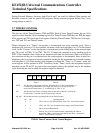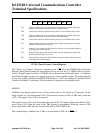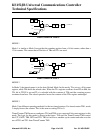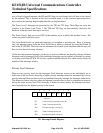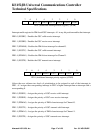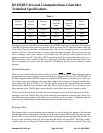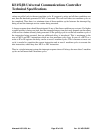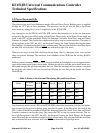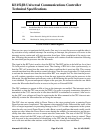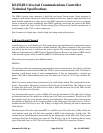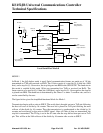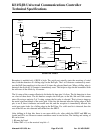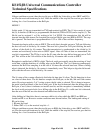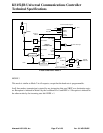
KS152JB Universal Communications Controller
Technical Specifications
Kawasaki LSI USA, Inc. Page 20 of 120 Ver. 0.9 KS152JB2
values are polled only in the next machine cycle. If a request is active and all three conditions are
met, then the hardware generated LCALL is executed. This call itself takes two machine cycles to
be completed. Thus there is a minimum time of three machine cycles between the interrupt flag
being set and the interrupt service routine being executed.
A longer response time should be anticipated if any of the three conditions are not met. If a higher
or equal priority is being serviced, then the interrupt latency time obviously depends on the nature
of the service routine currently being executed. If the polling cycle is not the last machine cycle of
the instruction being executed, then an additional delay is introduced. This is maximum in the
case of MUL and DIV instructions which are four machine cycles long. In case of a RETI or a
write to IP or IE registers the delay can be at most 5 machine cycles. This is because at most one
cycle is needed to complete the current instruction and at most 4 machine cycles to execute the
next instruction, which may be a MUL or DIV instruction.
Thus in a single-interrupt system the interrupt response time will always be more than 3 machine
cycles and not more than 8 machine cycles.



